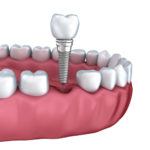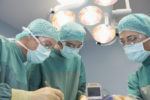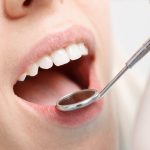Pizzafree no more: When can you enjoy your favorite slice after wisdom teeth removal?
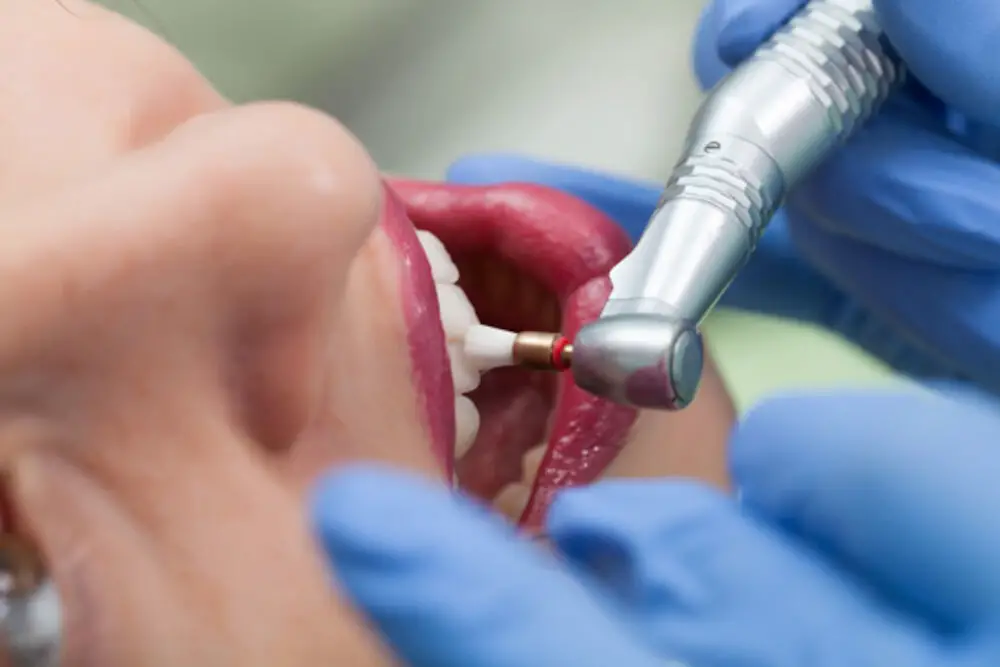
The thought of indulging in a delicious slice of pizza after wisdom teeth removal can be quite tempting. However, it’s important to keep in mind that this procedure requires careful aftercare to ensure proper healing. Wisdom teeth extraction can cause discomfort and swelling, making it difficult to enjoy your favorite foods right away. While it’s understandable to crave your favorite slice of pizza, it’s essential to follow your dentist’s instructions to prevent complications and promote a speedy recovery. During wisdom teeth removal, the dentist will provide specific instructions on how to care for your mouth post-surgery. This typically involves avoiding certain foods and beverages that could disrupt the healing process. However, the good news is that you won’t have to give up pizza entirely. With a bit of patience and proper care, you can gradually reintroduce your favorite foods into your diet. So when can you finally enjoy a slice of pizza again? Keep reading to find out.
Wisdom teeth removal is a common dental procedure that involves the extraction of the third molars located at the back of the mouth. These teeth often cause problems due to their size, shape, and position, which can lead to pain, infection, and damage to adjacent teeth. The procedure is usually performed under local or general anesthesia by a dentist or oral surgeon. After the surgery, patients may experience some pain, swelling, and bleeding, which can be managed with painkillers and ice packs. It is important to follow the dentist’s instructions carefully, such as avoiding solid foods and smoking, to ensure proper healing and avoid complications. Depending on individual recovery time, patients may be able to enjoy their favorite foods, including pizza, within a few days to a week after the procedure.
Avoiding certain foods after surgery is crucial for proper healing and preventing complications. In the case of wisdom teeth removal, patients should refrain from eating hard, crunchy, and chewy foods, such as pizza, chips, and nuts, that can irritate the surgical site and dislodge blood clots. Additionally, acidic, spicy, and sugary foods should be avoided to prevent pain, swelling, and infection. Instead, patients should opt for soft, lukewarm, and nutrient-rich foods, such as soups, smoothies, and mashed potatoes, that provide the necessary nutrients and hydration for the body to recover. Following the postoperative dietary guidelines can help patients avoid unnecessary discomfort and ensure a smooth recovery.
After going through the unbearable pain and discomfort of wisdom teeth removal, the mere thought of enjoying a delicious slice of pizza seems like a distant dream. However, the desire to eat pizza is completely understandable. The combination of gooey cheese, tangy tomato sauce, and various toppings is enough to make anyone’s mouth water. But when can you finally indulge in your favorite slice? The answer varies depending on the individual’s healing process, but it’s important to listen to your dentist’s instructions and wait until you’re fully healed to avoid any complications. Once you’ve been given the green light, go ahead and savor that first bite of pizza-free life no more!
What to expect after wisdom teeth removal

After a wisdom teeth removal procedure, it is common to experience some discomfort and swelling in the affected area. The level of discomfort can vary depending on the individual and the complexity of the extraction, but it is important to follow the post-operative instructions provided by your dentist or oral surgeon to minimize any complications. These instructions may include taking prescribed pain medications, applying ice packs to the affected area, and avoiding certain activities, such as smoking or drinking through a straw, that can disrupt the healing process. It is also recommended to eat soft foods and avoid chewing on the side of the mouth where the teeth were removed until the area has fully healed. As the healing process progresses, the discomfort and swelling should gradually subside, and you should be able to gradually introduce solid foods back into your diet. However, it is important to be patient and take things slow, as rushing the healing process can result in complications such as dry socket or infection. It may take up to a week or more before you can enjoy your favorite foods, such as pizza, without discomfort or risk of complications. It is important to listen to your body and follow the advice of your dentist or oral surgeon to ensure a smooth and successful recovery.
After undergoing wisdom teeth removal, patients need to go through a recovery period, which can vary from a few days to a week or more, depending on the individual’s healing process. During this time, patients should avoid solid foods, including pizza, as well as smoking, spitting, and using straws. They should also maintain good oral hygiene and take prescribed pain medication if necessary. As the swelling and discomfort subside, patients can gradually introduce soft foods into their diet, such as mashed potatoes or scrambled eggs, and eventually transition back to their regular eating habits. However, it’s important to follow the dentist’s instructions carefully to ensure proper healing and prevent complications.
After wisdom teeth removal, patients may experience a variety of complications that could impede their ability to enjoy their favorite slice of pizza. The most common complication is dry socket, which occurs when the blood clot in the socket dissolves or dislodges, exposing the bone and causing severe pain. Infection is another possible complication, which can lead to swelling, fever, and difficulty opening the mouth. Numbness, tingling, and nerve damage are also potential risks, which could affect the ability to taste and chew food. It is important to follow post-operative instructions carefully and avoid eating hard, crunchy, or spicy foods until cleared by the dentist to prevent these complications.
After wisdom teeth removal, following the instructions provided by your dentist is crucial for a successful postoperative recovery. Your dentist will recommend avoiding hot or cold foods and drinks for the first 24 hours and sticking to a soft food diet for at least the first week. It’s important to keep the extraction site clean by gently rinsing your mouth with salt water and avoiding brushing or flossing the area for the first few days. Pain and swelling can be managed with over-the-counter pain medication and ice packs. It’s also important to avoid smoking and drinking alcohol as they can delay healing. By following these instructions, you can ensure a smooth and comfortable recovery and be back to enjoying your favorite foods, including pizza, in no time.
Foods to avoid
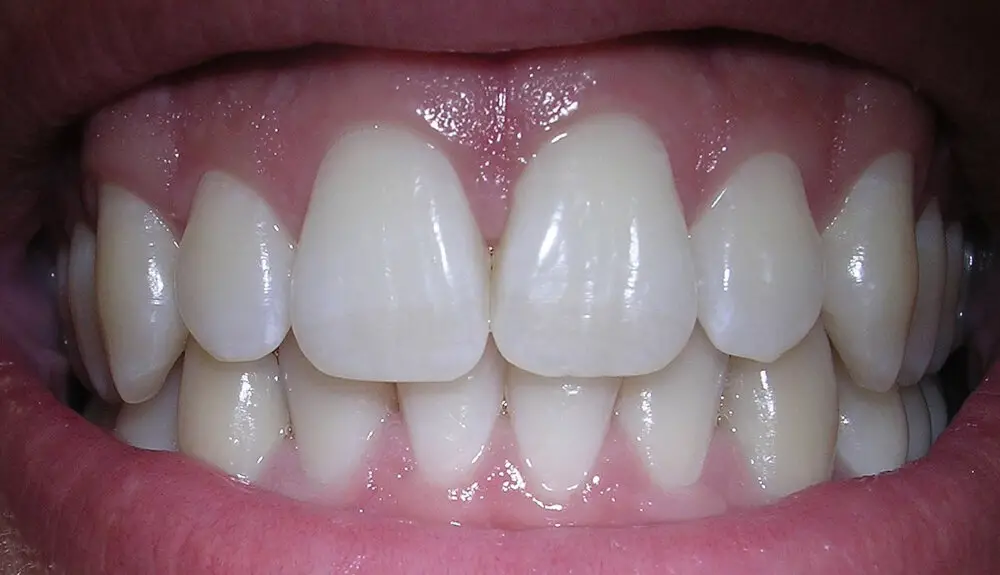
After wisdom teeth removal, certain foods should be avoided to prevent complications and ensure proper healing. Crunchy or hard foods such as chips, nuts, and popcorn should be avoided as they can irritate the surgical site and potentially dislodge the blood clot, which is crucial for proper healing. Additionally, spicy foods and acidic foods such as tomato sauce or citrus fruits should be avoided as they can cause discomfort and inflammation in the surgical area. It’s also important to avoid alcohol and smoking as they can delay the healing process and increase the risk of infection. Another food to avoid after wisdom teeth removal is pizza, specifically slices that are topped with chewy, sticky, or hard ingredients such as cheese or pepperoni. These toppings can get stuck in the surgical site and increase the risk of infection. However, if you’re craving pizza, there are alternatives you can enjoy after a few days of healing. Opt for a thin-crust pizza with soft toppings such as vegetables or chicken. You can also try a pizza without cheese if you’re concerned about dairy and lactose intolerance. Remember, listen to your body and follow your dentist’s instructions for a speedy and safe recovery.
Certain types of food can cause harm after wisdom teeth removal. Crunchy or hard foods such as chips, nuts, and popcorn can get stuck in the extraction site and cause irritation or infection. Spicy or acidic foods like hot sauce or citrus fruits can also irritate the site and cause discomfort. Sticky or chewy foods such as caramel or taffy can pull at the stitches and delay healing. It is important to stick to soft, easy-to-chew foods like mashed potatoes, scrambled eggs, and smoothies for the first few days after the procedure to promote healing and avoid any complications.
Pizza is a beloved food item that has been a staple for many people throughout the years. It is no wonder then that many people wonder if they can still enjoy their favorite slice after having their wisdom teeth removed. The answer is not a straightforward one as it depends on each individual’s situation. However, there are several reasons why pizza is included in the list of foods that people can eat after the surgery. Firstly, pizza is soft and easy to chew, making it a great option for those who cannot eat hard or crunchy foods. Additionally, the toppings on pizza can be customized to fit each person’s dietary needs, making it a versatile and satisfying meal option. Overall, pizza is a delicious and convenient food item that can still be enjoyed even after wisdom teeth removal.
Following the given instructions after wisdom teeth removal can bring about numerous benefits. Firstly, it can speed up the healing process and reduce the risk of complications such as dry socket. Secondly, it can help to minimize pain and discomfort by avoiding foods that can irritate the surgical site. Thirdly, adhering to the instructions can prevent infection by maintaining good oral hygiene practices. Lastly, it can ensure that you can enjoy your favorite foods, such as pizza, sooner rather than later. By following the instructions provided by your dentist or oral surgeon, you can ensure a smoother and more comfortable recovery period.
When can you eat pizza again?
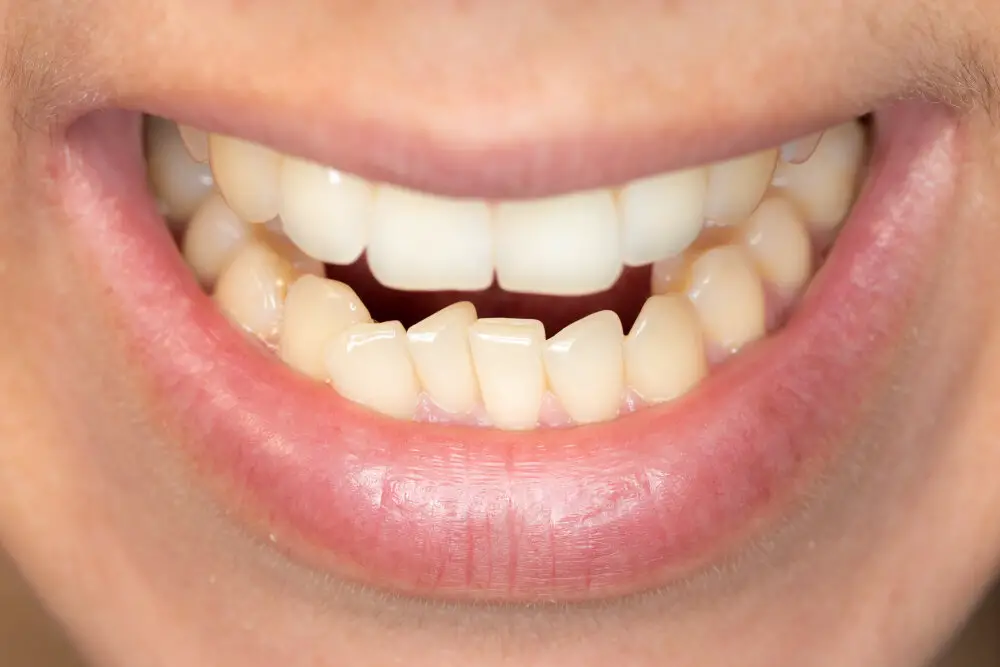
After wisdom teeth removal, it is crucial to take proper care of your mouth to ensure speedy recovery. Your dentist may recommend avoiding certain types of foods like pizza, which can be difficult to chew and may lead to discomfort or even infection. However, the duration of time when you can eat pizza again may vary depending on the individual’s healing process. Generally, it is recommended to wait at least a week before consuming solid foods like pizza. This period allows the wound to heal and reduces the risk of food particles getting stuck in the socket, which can lead to infection. Once the initial healing phase has passed, you can gradually introduce soft foods and eventually pizza. However, it is essential to be cautious and take small bites, chewing slowly and thoroughly. Avoid toppings that are hard or crunchy, as they can irritate the gum tissue and cause discomfort. Opt for a thinner crust and toppings that are easy to chew, such as vegetables, cheese or chicken. If you experience any pain or discomfort while eating pizza, stop immediately and give your mouth more time to heal. Remember to maintain good oral hygiene practices and follow your dentist’s recommendations to ensure a smooth and speedy recovery.
Several factors determine when you can eat pizza after wisdom teeth removal. Firstly, it depends on the extent of the surgery and the healing process of the individual. If the extraction was straightforward, and the healing process is swift, you can enjoy a slice of pizza a few days after the procedure. Secondly, the type of crust and toppings you choose also affects when you can eat pizza. Soft and easy-to-chew crusts like thin-crust or gluten-free crusts are more appropriate than chewy and tough crusts like deep-dish or stuffed crust. Lastly, it’s crucial to avoid any hard, sticky or crunchy toppings that may dislodge the blood clot in the extraction site, leading to dry socket. Therefore, it’s best to consult with your dentist or oral surgeon to determine the appropriate time to indulge in your favorite slice of pizza.
After wisdom teeth removal, it is common to experience pain and swelling, especially in the first few days. As such, it is important to consume soft foods during this time to avoid aggravating the surgical site. Soft foods are gentle on the mouth and can prevent unnecessary pressure on the healing area. The timeframe for soft foods varies depending on the individual’s healing process, but it is generally recommended to stick to a soft food diet for at least one week post-surgery. During this time, patients can enjoy a variety of soft foods such as mashed potatoes, scrambled eggs, and smoothies. It is important to avoid hard or chewy foods, such as pizza, until given the green light by the dentist or oral surgeon to prevent any complications or delays in the healing process.
When it comes to introducing harder foods after wisdom teeth removal, it’s important to follow the guidance of your dentist or oral surgeon. In general, it’s recommended to wait at least three days before attempting to eat any solid foods, and even then, you should start with soft, easy-to-chew options like mashed potatoes or scrambled eggs. As your mouth heals and your pain subsides, you can gradually introduce more solid foods, but it’s crucial to avoid anything too crunchy or hard that could potentially damage your sensitive gums or stitches. With patience and care, you’ll soon be able to enjoy your favorite slice of pizza once again.
Consulting with your dentist before consuming pizza after wisdom teeth removal is crucial as it helps in avoiding any potential harm to your healing process. Your dentist understands your dental condition and will advise you on when it is safe to eat pizza again. Consuming hot or spicy food can irritate your extraction site and cause pain or even lead to an infection. Therefore, it is advisable to follow your dentist’s instructions and wait until your gums have fully healed before enjoying your favorite slice of pizza. Your dentist’s guidance plays a vital role in ensuring a speedy and successful recovery from wisdom teeth removal surgery.
Tips for eating pizza postsurgery

Eating pizza after surgery, especially after wisdom teeth removal, can be a tricky task. However, with a little bit of preparation and care, you can enjoy your favorite slice without any complications. Firstly, opt for softer toppings like mushrooms, olives, or cooked vegetables instead of hard meats or crunchy veggies. This will not only make it easier to chew but also reduce the risk of getting food stuck in the extraction site. Additionally, avoid eating hot or spicy pizza, as it may irritate the wound and cause discomfort. Instead, choose a milder sauce and let it cool down to room temperature before consuming. Another important tip for eating pizza post-surgery is to take small bites and chew slowly. This will prevent any accidental biting of the cheek or tongue and reduce the pressure on the extraction site. Moreover, avoid using a straw while drinking beverages as it may cause dry sockets, which can be extremely painful. Additionally, drink plenty of water after eating to help flush out any food particles and keep your mouth hydrated. By following these tips, you can enjoy your favorite slice of pizza without any worries and ensure a smooth recovery after surgery.
For those who have recently had their wisdom teeth removed, eating pizza may seem like a daunting task. However, there are a few suggestions that can make it easier and more enjoyable. Firstly, cutting the pizza into smaller pieces can make it easier to chew and swallow. Additionally, avoiding toppings that are difficult to bite, such as large chunks of meat or vegetables, can prevent discomfort. Using a fork and knife may also be helpful, as it allows for smaller bites and better control. Lastly, opting for a thinner crust can make it easier to chew and avoid any potential pain. By following these simple suggestions, enjoying a slice of pizza after wisdom teeth removal can still be possible.
Chewing carefully is a crucial part of maintaining good oral health, especially after a wisdom teeth removal procedure. When the dentist removes these teeth, it leaves an open wound that needs time to heal. Chewing too quickly or too forcefully can dislodge the blood clot that forms over the socket, causing a painful condition known as dry socket. Moreover, chewing food thoroughly is important for proper digestion, as it breaks down the food into smaller pieces that are easier for the body to absorb nutrients from. Therefore, taking the time to chew carefully can not only prevent painful complications after a wisdom teeth removal but also promote overall health and well-being.
After undergoing wisdom teeth removal, it is crucial to avoid hot temperatures. Hot foods and drinks can interfere with the healing process and lead to complications such as dry socket, a painful condition where the blood clot that forms after extraction dislodges. Consuming hot foods and drinks can also increase swelling and discomfort, making the recovery period longer and more challenging. Therefore, it is recommended to stick to cold and lukewarm foods and beverages, such as smoothies, ice cream, and lukewarm soup, for the first few days after the surgery. Remember that a little patience will go a long way in ensuring a smooth and speedy recovery.
Following postoperative instructions after wisdom teeth removal is crucial for proper healing and to prevent complications. These instructions typically include avoiding solid foods, refraining from smoking, and maintaining proper oral hygiene. Failure to follow these instructions can result in dry socket, infection, prolonged healing time, and even the need for additional surgery. While it may be tempting to indulge in your favorite foods, such as pizza, it’s important to prioritize your oral health and follow the instructions provided by your dentist or oral surgeon. By doing so, you can ensure a smooth and comfortable recovery process and get back to enjoying all of your favorite foods in no time.
Pizza lovers, rejoice! It’s time to get back to your favorite slice of cheesy goodness. However, before you dive into that first bite, it’s essential to consult with your dentist. After wisdom teeth removal, your mouth needs time to heal and recover. Even though you may be craving pizza, it’s crucial to ensure that you don’t cause any damage to the extraction site. Your dentist will be able to assess your healing progress and advise you on when it’s safe to indulge in your favorite pizza again. So, go ahead, schedule that appointment, and soon you’ll be back to enjoying your favorite slice without any worries.
The recovery process after wisdom teeth removal can be a challenging time, but it is important to follow the post-operative instructions carefully to ensure a smooth healing process. It is normal to experience some discomfort, swelling, and bleeding in the first few days after the procedure. However, with proper care, these symptoms should subside within a week or two. As tempting as it may be to indulge in your favorite foods, it is best to stick to soft and easy-to-chew foods for the first few days to avoid damaging the surgical site. It is also important to maintain good oral hygiene, including gentle brushing and rinsing with saltwater, to prevent infection. With patience and proper care, you’ll be back to enjoying your favorite slice of pizza in no time!
Conclusion

In conclusion, while the thought of not being able to enjoy a slice of pizza after wisdom teeth removal may seem daunting, it is important to prioritize proper healing and avoid any complications. It is recommended to wait at least 2-3 days before attempting to eat solid foods and to gradually reintroduce them into your diet. It is also crucial to avoid any hard or crunchy foods that can damage the extraction site. As always, it is best to follow your dentist or oral surgeon’s instructions for a successful and speedy recovery. So, be patient and soon enough, you’ll be able to savor your favorite slice of pizza once again.





